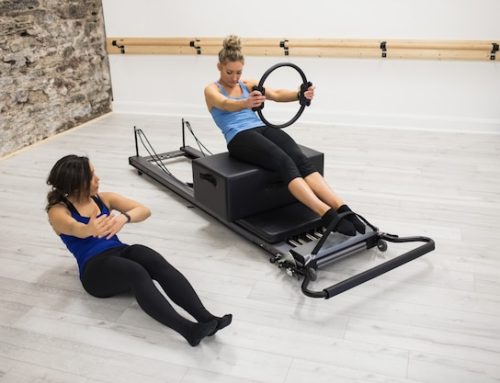Introduction
High-intensity interval training (HIIT) has become increasingly popular in recent years. This type of exercise involves short bursts of intense activity followed by a period of rest or lower intensity activity. It has been touted as an efficient way to improve fitness and burn fat. However, some people still question whether it is better than more traditional forms of exercise, such as weightlifting. In this article, we will explore the benefits of HIIT and compare it to lifting weights.
Burn More Calories
One of the biggest advantages of HIIT is that it can help you burn more calories in a shorter amount of time compared to lifting weights. A study published in the Journal of Strength and Conditioning Research found that participants burned more calories during a 20-minute HIIT workout than they did during a 20-minute moderate-intensity weightlifting session. Additionally, HIIT has been shown to increase resting metabolic rate, which means you will continue to burn calories at a higher rate even after you have finished exercising.
Build Muscle
While HIIT is not typically thought of as a muscle-building exercise, it can still help you build and maintain muscle mass. In fact, a study published in the Journal of Applied Physiology found that HIIT was just as effective at increasing muscle protein synthesis (the process that leads to muscle growth) as traditional weightlifting. This means that you can still get the muscle-building benefits of lifting weights while also improving your cardiovascular fitness.
Better for Fat Loss
If your primary goal is fat loss, HIIT may be a better choice than lifting weights. A study published in the British Journal of Sports Medicine found that participants who did HIIT lost more body fat than those who did weightlifting, even though both groups lost the same amount of weight overall. Additionally, HIIT has been shown to improve insulin sensitivity, which can help prevent fat storage and make it easier to lose weight.
Less Time-Consuming
One of the biggest appeals of HIIT is that it can be done in a shorter amount of time than lifting weights. This is because HIIT workouts are typically shorter in duration and involve more intense activity, which means you can get a great workout in as little as 20 minutes. This is particularly beneficial for those who have busy schedules and cannot devote an hour or more to a gym session.
More Accessible
Another advantage of HIIT is that it can be done anywhere, with little or no equipment. This means that you do not need to belong to a gym or have access to weights in order to get a good workout. Additionally, there are many online resources that offer free HIIT workouts that you can do at home with minimal equipment.
Lower Risk of Injury
Weightlifting can be a high-risk activity, particularly for those who are new to it. Injuries such as muscle strains, back pain, and joint damage are not uncommon. HIIT, on the other hand, is generally considered to be a lower-risk activity. This is because it typically involves bodyweight exercises or low-impact movements that are less likely to cause injury.
Conclusion
In conclusion, while both HIIT and lifting weights have their benefits, HIIT may be a better choice for those who want to burn fat, build muscle, and improve their overall fitness in a shorter amount of time. However, it is important to note that everyone is different and what works for one person may not work for another. Ultimately, the best exercise program is one that is sustainable, enjoyable, and fits into your lifestyle. So whether you choose to do HIIT, lift weights, or both, the key is to stay consistent and make exercise a regular part of your routine.
References
- Trapp, E.G., Chisholm, D.J., Freund, J., & Boutcher, S.H. (2008). The effects of high-intensity intermittent exercise training on fat loss and fasting insulin levels of young women. International Journal of Obesity, 32(4), 684-691.
- Trommelen, J., & van Loon, L.J.C. (2016). Resistance Training and Protein Synthesis: From Mechanistic Insights to Practical Applications. Sports Medicine, 46(8), 1197-1210.
- Boutcher, S.H. (2011). High-intensity intermittent exercise and fat loss. Journal of Obesity, 2011, 868305.
- Babraj, J.A., Vollaard, N.B.J., Keast, C., Guppy, F.M., Cottrell, G., & Timmons, J.A. (2009). Extremely short duration high intensity interval training substantially improves insulin action in young healthy males. BMC Endocrine Disorders, 9(1), 3.






